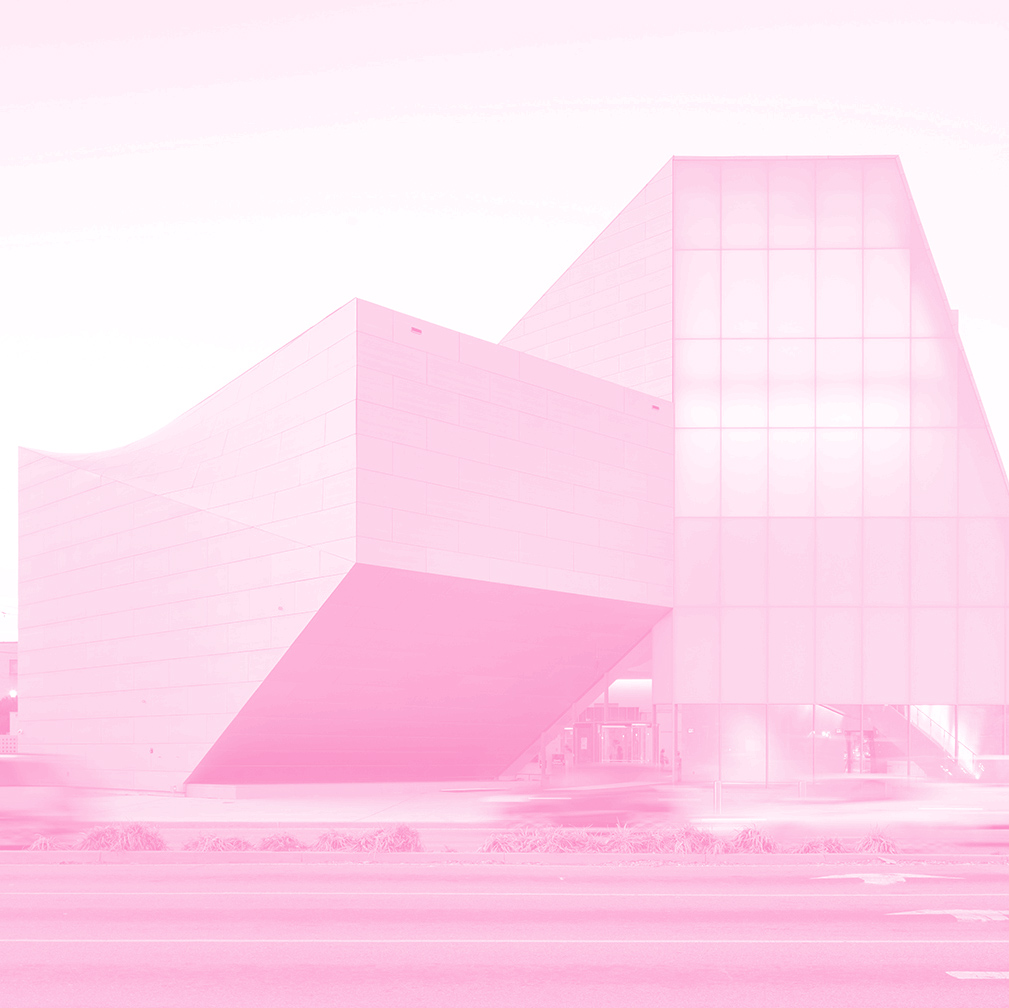David Hartt
Tapestry
DAVID HARTT: Hi, my name is David Hartt, and I’m an artist.
The work I’m presenting involves several different kinds of media; there are two photographs, there’s a twenty minute film, there’s a tapestry, and then there are two sculptures.
The image in the tapestry was derived while I was shooting the film. The tapestry starts to embody many of the things that I think I appreciate in history-painting which is the way authority and scale are interrelated. You know in the foreground you have the truck yard, and right behind that you have a wrecker’s yard with cars, beyond that there’s a bus on the street with somebody catching it, beyond that you have tract housing, and then there’s a church off to the left, and in the far background there’s a bridge under construction.
There’s all of these different kinds of spaces and activities that coexist. It manages to kind of distill and combine all of these different perspectives at once.
The plants kind of creeping up through the cracks, it’s almost heroic in a way and I’m trying to demonstrate that there’s this constant negotiation, this constant pushing and pulling. And for me that’s the best description of reality. I’m not interested in these kinds of hegemonic positions where one dominant position simply replaces another, I don’t think that any of us want to live in a world that’s described that way.
Negative Space
DAVID HARTT: My work deals with the relationship between ideology and the built environment.
“Negative Space” is a body of work. It really is a direct confrontation with an idea of how we understand and interact with a newly emergent political reality.
I definitely wanted to acknowledge the antagonism, the difficulty, of our particular historical moment. To address the problem head on, rather than trying to see a silver lining in what’s happening. You know maybe it’s leavened with a degree of pathos, but I don’t want to pull any punches in terms of what I see as a moment of decline.
So the work addresses that, and it names the landscape in a way that’s very clear and uncompromising.
One of the unique capacities of art is that it allows us to address unstable concepts and to dimensionalize them, and I have a firm belief that through making work I see and understand the world better.
Artifact
DAVID HARTT: As a site, I was interested in the eastern seaboard of the United States. Because I was thinking about it as a region rather than a specific city, it was important while I was making the film to try and kind of recognize a kind of continuity as I moved through those spaces.
The phone enclosure is something that I noticed while shooting the film, as something that was distributed through the landscape, but particularly in urban neighborhoods that were quite poor. The actual technology, the phone, had been removed but the enclosure remained as a kind of marker almost. The design of the enclosure was specific to protecting the equipment, and in fact as part of the design brief, the protection of the equipment was more important than revenue generation.
I started to see the enclosure as a kind of informal monument that not only spoke to the history of telecommunications technology, but also to a way of seeing and understanding different communities and their relationship to the broader city that they were connected to.
Chairs
DAVID HARTT: I think the kind of work that I want to make and the kind of experience I want to engender involves just spending time.
So, the kind of cheap plastic seating that’s present in the galleries is actually important because it gives somebody a place to sit. It’s not a bench that’s hard to pick up and move, and that prioritizes a specific perspective. It’s something light and cheap that you’re free to move around and find your own vantage point.
The Last Poet
DAVID HARTT: I’ve been obsessed with thinking about history-painting. In many ways that’s what my ambition is in terms of filmmaking.
You know, how can I through filmmaking talk about my impression of the contemporary? The way that I make films too, they’re not narrative, they’re not documentaries, their closest approximation is essay filmmaking.
The genesis of the film was being invited to participate in the Rauschenberg Foundation residency program that they have on Captiva Island in Florida. And I was looking at the work of Rauschenberg, particularly a journey that he took where he went from Long Island down to Captiva and used a new Canon AE1 SLR camera to record his ideas of urban America and interrogate these ideas of ubiquitousness and individuality.
And I was thinking how would Rauschenberg look at that landscape today, and what kind of tools would he use assuming that he was using a cutting-edge technology for the time.

 10 AM-5 PM
10 AM-5 PM
 10 AM-4 PM
10 AM-4 PM

 Area Map
Area Map  Parking
Parking 